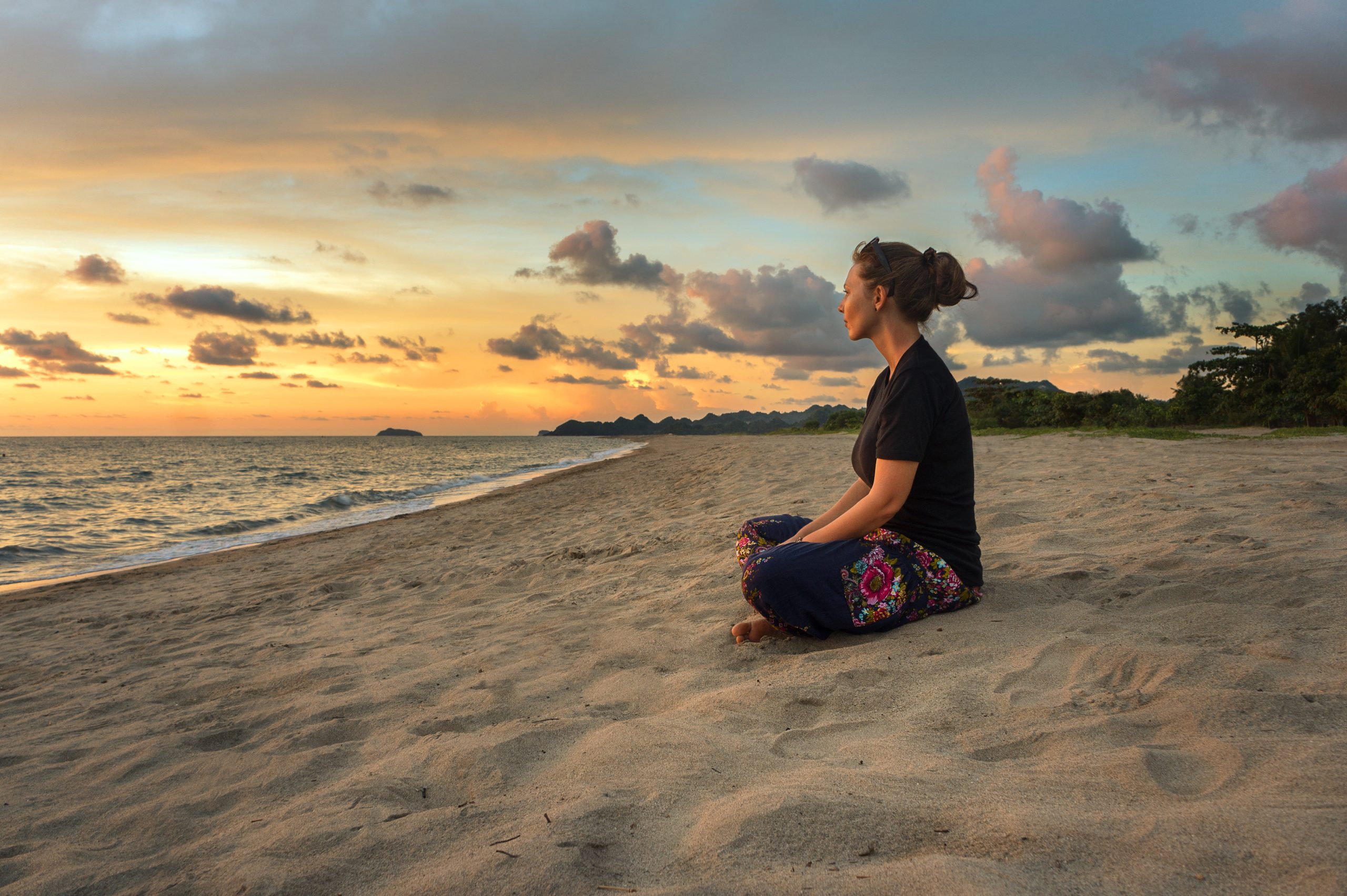*This is an article from the Spring 2024 issue of Contentment Magazine.
By Frank Forencich, PhD, DAIS
“People never learn anything by being told, they have to find out for themselves.”
Paulo Coelho, Veronika Decides to Die1
Everyone’s ‘feeling it’ these days: the crushing stress burden, the personal and intergenerational trauma, the confusion, and the helplessness that is coursing through the collective unconscious of humanity. Statistics tell a powerful story, but you don’t have to be an expert to feel the tension in the air. Many of us are hanging on by our fingernails, and even for those who manage to maintain a sense of normalcy, modern life remains a sketchy, tentative proposition.
The good news is that we have a solid understanding of how the body processes stress and trauma and, in a general sense, at least, what to do about it. One highly instructive example comes from Bessel van der Kolk, author of the bestselling The Body Keeps the Score,2 in which he describes three pathways to healing the mind and body. The first is a “top-down” cognitive approach, relying heavily on language, narrative, and explanation. Talk therapy is the obvious example, but we also do this work informally, using conversation with friends to re-frame our experience and explain why things are the way they are.
The second pathway is biomedical and includes a wide range of substances and technological interventions, all aimed at organs, tissues, neurophysiology, and genes. In the popular imagination, we think of rebalancing neurotransmitter levels, tweaking the microbiome, or adjusting the activity of the vagus nerve, which controls various body functions like digestion, heart rate, and the immune system. This approach has value but is complicated by placebo effects, culture, and individual variation.
The third pathway is what Van der Kolk calls a “bottom-up” approach based on lived experience. This strategy is extremely promising as it speaks to the deepest levels of the human mind-body, in what some have called “the language before words.” It is also consistent with everything we know about the evolutionary history of the human animal. The vast, overwhelming majority of our experience on this planet has been pre-verbal or non-verbal. Like every other mammal and primate, the primary channel for knowledge and transformation is via the body. Words, we might say, are an afterthought.
Specifically, Van der Kolk calls for “experiences that deeply and viscerally contradict the helplessness, rage or collapse that result from trauma” (or stress, for that matter). In other words, the body wants experiential proof that the world is, in fact, a friendly, manageable, and reliable place. This experience is vital for the human organism. No amount of language, pharmaceutical intervention, or electrical stimulation will substitute for this primal need. In short, the body is driving the bus, and it’s our job to create experiences that prove to the autonomic nervous system that the world is truly a friendly, manageable place. This might be considered the primary job description for anyone working with the human animal: therapists, coaches, trainers, teachers, parents, and healthcare professionals.
Vital elements
All of these suggest a salutogenic approach (from salut: health and genesis: origins) and a practice of intentional, deliberate experiential design. Start from scratch with a beginner’s mind and a veterinary perspective. How do we create conditions that foster post-traumatic growth in the human animal? Expert opinion may be helpful here, but on some level, we already know the formula. Throughout history, humans have always sought out calming, restorative environments, and intuitively, we know what works.
The first step is to address the immediate concern of the autonomic nervous system: the perception of danger and safety. In effect, the system continuously asks a simple question about its predicament: “Is my world friendly?” If the answer is yes, the system relaxes into rest-and-digest, healing tissues and metabolizing experience. If the answer is no, it goes the other way into a fight or flight activation. And if the answer is repeated with a consistent global “no” the stress becomes chronic and degenerative.
This is why creating a sense of coherence in our programs and experiences is vital, a perspective developed by Aaron Antonovsky (1923-1994), an Israeli American sociologist with an existential view of human health.3 When we’re born, life surprises us, and we have nothing to go on except our immediate, lived physical experience. At this level, words don’t have much to say. To be at ease in the world, the body needs to feel that reality is reliable, consistent, and at least somewhat predictable. As Antonovsky saw, health depends on our sense of coherence, especially the feeling that circumstances are comprehensible, controllable (or manageable), and meaningful. Simply put, the animal wants to know that reality is reliable. Coherence puts our minds and bodies at ease and prepares us for healing and growth.
Similarly, our modern understanding of stress also informs our experiential design. What exacerbates distress in the human animal? How can we design an experiential antidote that puts us at ease? Consider this list from Professor Robert Sapolsky, summarizing modern stress research in Scientific American, December 2005.4 As he saw it, “Individuals are more likely to activate a stress response and are more at risk for a stress-sensitive disease if they;
- feel as if they have minimal control;
- feel as if they have no predictive information;
- have few outlets for their frustration (especially sports, crafts, hobbies);
- lack social support.
In the inverse, this gives us a simple but powerful template for creating optimal conditions for post-traumatic growth. In short, the goal is to set up environments, programs, and cultures that give our people some sense of control, predictability, opportunities for physical movement, and, above all, social support. This simple formula can guide us in any health or educational setting we’re working in, from schools, to clinics, to the workplace.
Social-autonomic unity
In setting the stage for post-traumatic growth, we would also do well to create a sense of autonomic unity among the people we’re working with. As hyper-social animals, human bodies and minds work best with a sense of shared predicament, as in “we’re all in this together.” In historically normal conditions–such as hunting and gathering–everyone in your party would have agreed on the dangers (lions, tigers, and bears, oh my!). Consequently, everyone’s autonomic system would have been roughly aligned. In turn, this autonomic unity gives a sense of social cohesion, harmony, and even calm in the face of danger. Facing a dangerous or ambiguous world as a cohesive group is much easier.
But in the modern world, this sense of autonomic unity breaks down as novel threats disrupt our attention and our understanding of what’s truly dangerous. Across the modern world, some of us are deep in a chronic fight or flight state, while others, especially the affluent, live in relative calm. This autonomic discord is not only confusing; it is hard on everyone’s body and mind. When everyone on your team is acting with different perceptions of threat and urgency, it is that much harder to move into post-traumatic growth.
For the practitioner, this suggests creating shared predicaments for our students, clients, and patients. Look for all-in-the-same-boat experiences that similarly fire everyone’s autonomic systems, settings where people can rally around singular challenges and perceived dangers. Avoid fragmentation and keep everyone pointed in the same direction; the more agreement on what’s dangerous, the better the outcome will likely be.

Implementation and inconvenience
Fundamentally, the basic salutogenic elements are well-known and understood: physical movement (such as exercise), meditation in one form or another, exposure to natural habitat and beauty, and social conversation, especially around good food. You can organize these experiential elements as you see fit. For example, you might begin with a movement session, then ease into meditation, followed by some creative activity, conversation, or presentation. Or you might begin with meditation, followed by something more active and somatic. Sequence and order are less important than predictability and regularity; people stressed and traumatized by incoherent, arbitrary, and unpredictable experiences need reliable conditions and a rhythmic oscillation of engagement.

The value of the experiential approach is clear, but we must recognize the required depth of experience. That’s because stress and trauma have an outsized, disproportionate impact on the human animal. As the psychological community often says, “the bad is stronger than the good.” Negative experiences, especially early in life, are sticky and hyper-influential. This is why our experiential counterarguments must be deep and sustained; in short, we need to make “the good stronger than the bad.” And all of this takes time: a quickie lecture or half-day workshop won’t be enough to convince the human animal that reality is reliable, and that the universe is, in fact, friendly. For post-traumatic growth to occur, we’ve got to make a sustained and persuasive case to the autonomic system, and this is going to take repetition, time, and patience.
All of which is promising, but it’s also highly inconvenient. Putting together sustained, in-depth experiences for stressed and traumatized people is a big, expensive job. There are considerable challenges in transportation, housing, food, facilities, time, and, above all, funding. It’s a big ask, but inconvenient as it all might be, it’s essential to remember that what we have now is radically inconvenient. Our mental health crisis is destroying our ability to create a functional future; not only are people suffering, but entire systems devoted to human welfare are breaking down and lapsing into incoherence. In other words, the status quo is immensely expensive and traumatizing as is. If we’re going to turn things around, we will have to change things, even if it means taking some risks.
References
- Coelho, Paulo. Veronika Decides to Die: A Novel of Redemption HarperOne, 2021.
- van der Kolk, Bessel The Body Keeps the Score: Brain, Mind, and Body in the Healing of Trauma. Penguin Books, 2015.
- Antonovsky, Aaron Unraveling The Mystery of Health. How People Manage Stress and Stay Well. Jossey-Bass Publishers, 1987.
- Sapolsky, Robert, modern stress research in Scientific American, December 2005.
ABOUT THE AUTHOR

Frank Forencich earned his BA at Stanford University in human biology and neuroscience and has over thirty years of teaching experience in martial arts and health education. Frank holds black belt rankings in karate and aikido and has traveled to Africa on several occasions to study human origins and the ancestral environment. He’s presented at numerous venues, including the Ancestral Health Symposium, Google, the Dr. Robert D. Conn Heart Conference, and the Institute of Design at Stanford University. A former columnist for Paleo Magazine, Frank is the author of numerous books about health and the human predicament including Beware False Tigers and The Enemy is Never Wrong. He’s a Diplomate member at The American Institute of Stress and a frequent contributor to Contentment Magazine. Refer to www.exuberantanimal.com for more information.
Contentment Magazine
The dictionary defines “content” as being in a state of peaceful happiness. The AIS magazine is called Contentment because we want all of our guests and members to find contentment in their lives by learning about stress management and finding what works best for each them. Stress is unavoidable, and comes in many shapes and sizes that makes being in a state of peaceful happiness seem like a very lofty goal. But happiness is easy to find once you are able to find ways to manage your stress and keep a healthy perspective when going though difficult times in life. You will always have stress, but stress does not always have you!

Leave A Comment
You must be logged in to post a comment.